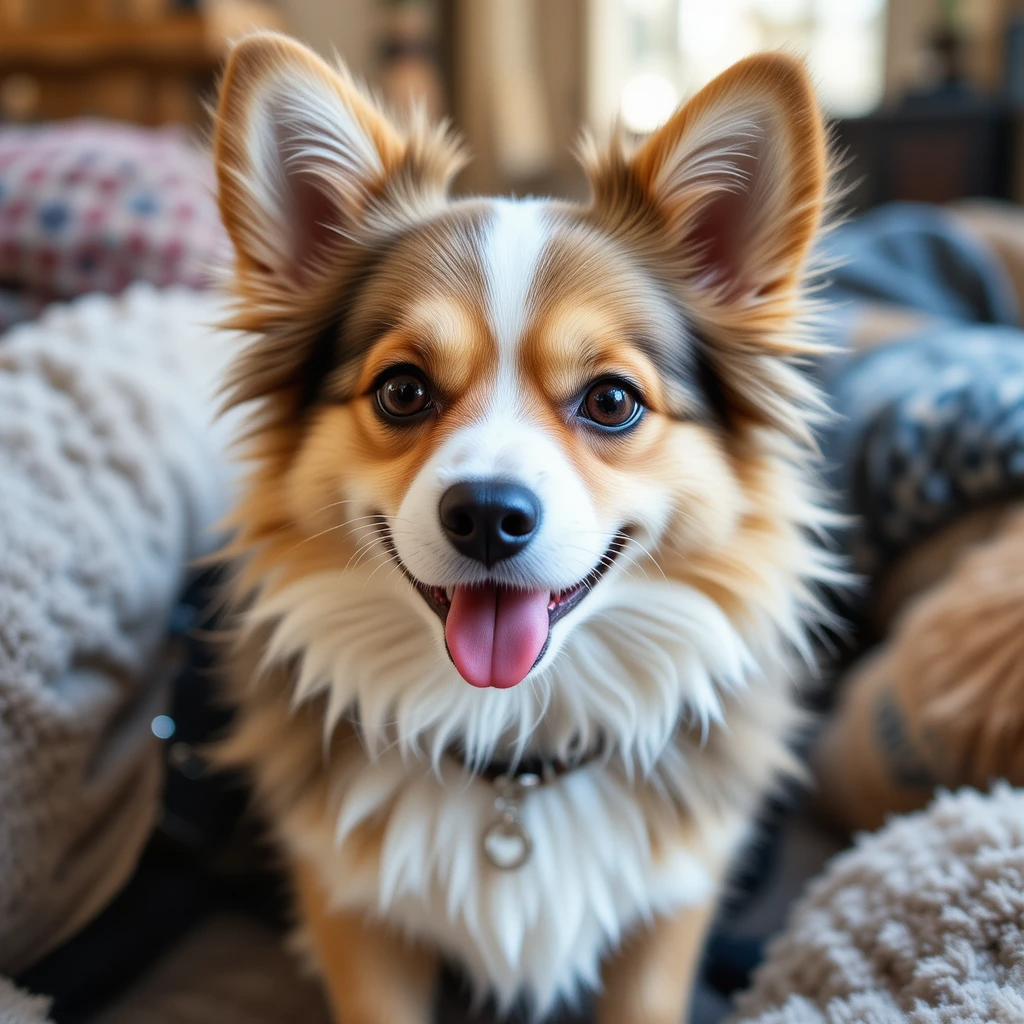What is Corgi Pomeranian Mix Breed Dog ?
The Corgi Pomeranian Mix dog is not just a regular pet—it’s a delightful blend of two parent breeds with a rich royal legacy. As someone who has spent years around companion breeds, I can say that the Corgi Pomeranian carries a unique spark that makes them stand out, even among other adorable dogs. Although it’s not an established breed with standardized features, what makes this modern mix special is its unexpected combination of traits.
People often search on Google for this mix only to find scattered information, mostly about the Corgi or the Pomeranian alone. That’s because little published material exists specifically about this hybrid. Yet, from my own experience, you can truly understand their nature better by looking closely at the parent lineage.
Their charm lies in being a limited but lovable cross—playful like a Pom, sturdy like a Corgi. The pictures online don’t do justice to how affectionate and bold they can be in real life. This breed may not be recognized by kennel clubs, but it doesn’t need a label to melt hearts. Owning one, I’ve seen firsthand how quickly people fall for their personality. They’re not just cute; they’re packed with charisma and confidence. Once you’ve met a Corgi Pomeranian, you’ll understand why this breed is quietly becoming a favorite in small homes.
Table of Contents
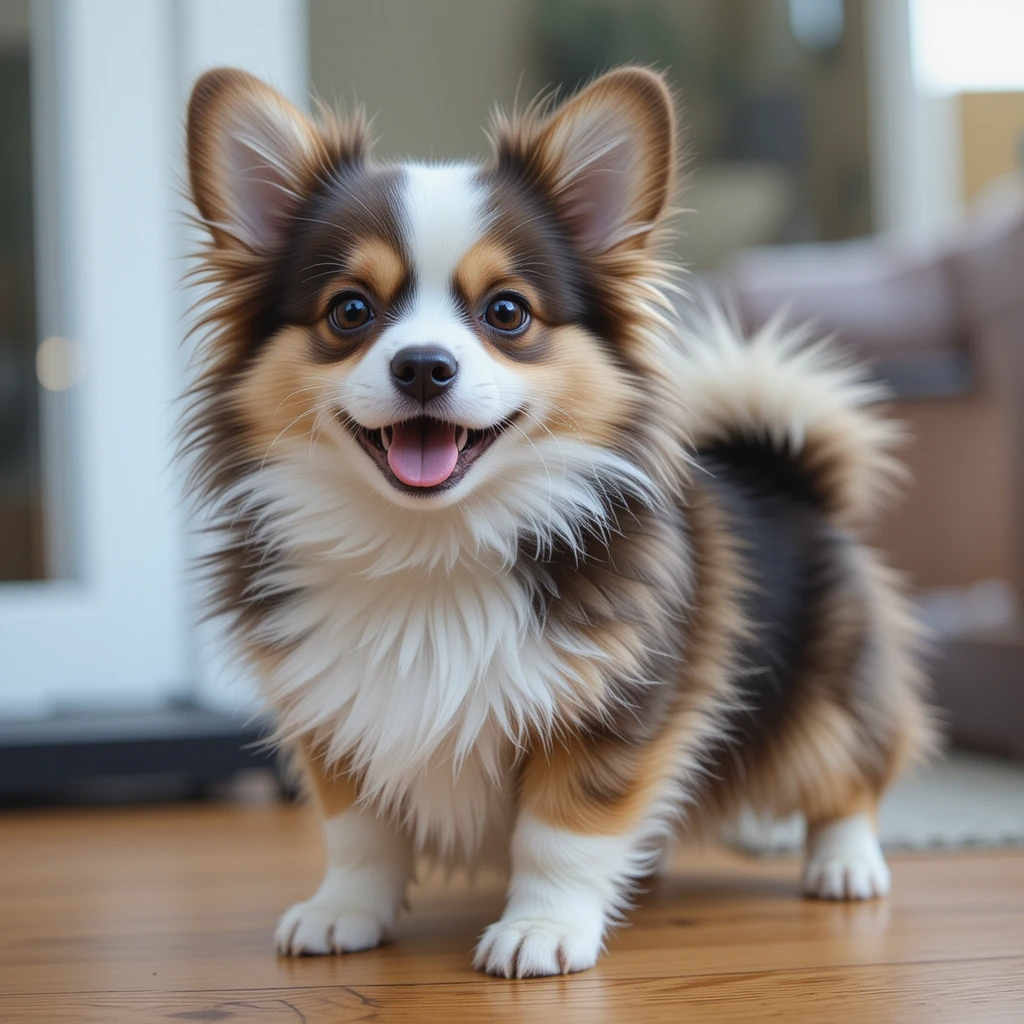
Appearance, Personality, and Traits of a Corgi Pomeranian Mix
When it comes to the Corgi Pomeranian, trying to define its exact appearance, personality, and traits can be a bit of a challenge. That’s mainly because there’s still limited information available and no solid clear-known history behind this adorable mixed-breed. From my own time raising one, I’ve learned that every pup can look and act differently—even within the same litter. This is why studying both parent breeds is not just helpful, it’s essential. It’s the only way to get close to understanding the characteristics their offspring might inherit.
The general shape often lands somewhere between the compact, long body of a Corgi and the fluffy coat of a Pomeranian. But it’s not all about looks. These dogs are full of energy, curiosity, and charm. With the right attention, you’ll begin to uncover their unique blend of inherited behavior. Without solid background records, the best route to gaining detailed knowledge about what you’re getting into is still observing and learning directly from both sides of the bloodline.
Pomeranian Corgi Mix Puppies for Sale
The Pomeranian Corgi mix is a small, cute companion dog with a fluffy, beautiful coat and a slightly regal charm. As a hybrid, it might inherit the best characteristics of its parent breeds, but it can also bear weaknesses from both genetic pools. That means you need to be aware of health issues these dogs are more susceptible to. When I got mine, I made sure to request full health clearances from the breeder, and you should too—especially when you purchase a pup. Always be cautious with puppies advertised on websites, no matter how convincing they seem.
The ASPCA and the Humane Society of the United States (HSUS) both advise against buying dogs online or from puppy mills, as many of them keep female dogs in inhumane conditions just to produce puppies for sale. Instead, look for a reputable or responsible breeder who understands their breeds, limits their types of dog, and is well-knowledgeable about their requirements. A good breeder will let you meet the puppy’s parents, show you the areas where they live, and offer full documentation on the puppy’s health, including issues inherent to the breed.
They’ll also provide a written contract, a health guarantee, and helpful guidance on training and care. If you’re fortunate, they may even give referrals to trusted breeder friends if they don’t have any available. You can also check your local animal shelter, where the adoption cost usually includes vaccination, spay/neuter fees, and the joy of knowing you saved the life of a homeless pup. It may be a challenge, but the effort, time, and thought you put in will pay off in love.
Grooming Your Corgi Mixed with Pomeranian
Grooming a Corgi Pomeranian mix can feel like a full-time job if you’re not ready for the commitment. Both the Corgi and Pomeranian have double-layered coats and are known for frequent shedding. Not only do they shed constantly, but the shedding gets heavier twice a year, especially seasonally or during pregnancy. I’ve learned that to truly care for this hybrid, you need to be well-invested in their high-maintenance coat needs before you adopt or own one. Daily brushing is non-negotiable—it prevents knots, helps massage the skin, and spreads natural body oils that moisturize the fur.
Skip the dry coat brushing though—it may irritate the skin and lead to hair fall. I recommend using a soft bristle brush or wide comb, and for a quick refresh, spray some hair conditioner before brushing instead of giving full baths. Beyond the coat, you’ll need to stay on top of nail and paws care. I personally trim the nails about twice a month, though you can also visit a veterinarian clinic or trusted pet groomer for a professional touch. And don’t overlook their teeth.
The Pomeranian side tends to be prone to tooth decay and dental health problems, so their offspring often inherit those risks. I make it a point to brush their teeth at least 2-3 times a week to help maintain strong, functioning teeth and avoid future issues.
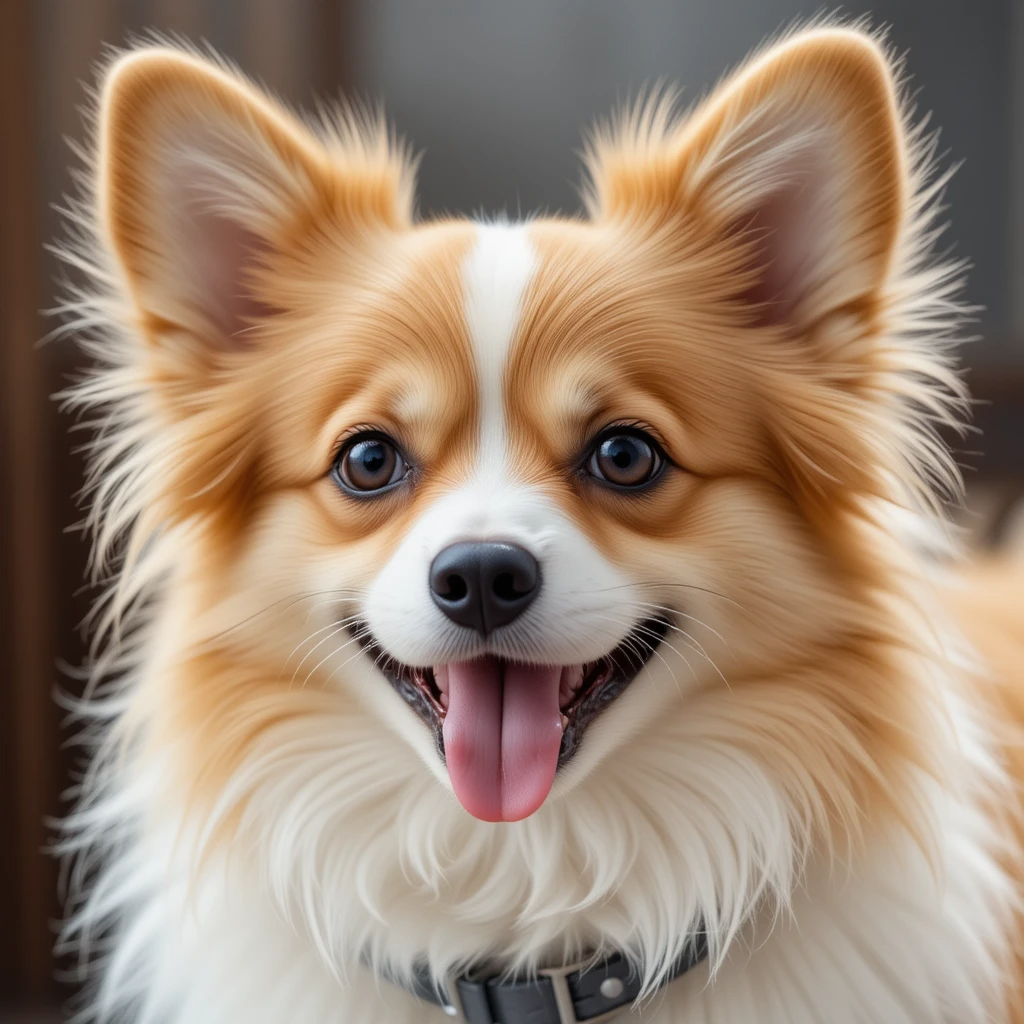
Is the Grooming Worth It?
As someone who has raised both Pomeranian and Corgi dogs, I can tell you—when you mix the two, the grooming gets serious. This isn’t a low-effort pet. The Corgi Pomeranian mix has a thick, double-layered coat that’s cute in pictures but tricky in real life. They shed often, and not just a little. A quick comb through their fur can leave a puff ball the size of a rock on your floor. Over time, your house starts to look like it’s growing fur too. Some days, even my pet’s bed needed vacuuming more than my own.
Grooming them is high-maintenance—you either spend a lot of money getting it done professionally, or you do it yourself, which can be messy, time-consuming, and a bit of a workout. I’ve tried both, and let me say, neither is easy. If you’re someone who gets lazy with chores, this dog may not be the one for you. Laziness, in this case, isn’t just a bad habit—it leads to a matted, uncomfortable dog and a very frustrated owner. The chances are high you’ll regret skipping grooming just once. If your lifestyle doesn’t allow for frequent upkeep, you might want to think twice before bringing this mix home.
Pomeranian Crossed with Corgi Health Problems
The Pomeranian mixed with Corgi may look like the perfect little companion, but as a rare breed, it’s important to know there aren’t many documented health issues specific to them. That doesn’t mean they’re risk-free. In fact, they can inherit a range of diseases from their parent breeds. I’ve worked with quite a few of these mixes, and each one had something different come up over time.
You should always be aware of common conditions that show up in either the Corgi or the Pomeranian line. Some examples include a high tendency to become overweight, Intervertebral Disc Disease, and Hip Dysplasia, especially from the Corgi lineage. On the Pomeranian lineage side, they are more prone to Heart problems like Patent Ductus Arteriosus, and also eye issues such as dry eyes, cataracts, and even eye dystrophy.
The best way to lower the chance of dealing with these problems is to purchase your puppy from a reputable breeder who offers complete registration and health certificates. I always remind future pet parents to ask for these upfront—it’s not just paperwork, it’s peace of mind. Getting your dog from someone who truly understands both breeds and has done the proper screenings can save you a lot of stress later. If you’re a potential owner, take this step seriously; it could make all the difference for your dog’s long-term health.
Pomeranian Mixed with Corgi Food Requirements
Feeding a Corgi Pomeranian mix needs more than grabbing a random bag of dog food. Start with a proper feeding plan that includes a transitional phase from your breeder’s choice to your own preferred quality and healthy options. I always recommend slowly deducing a small amount of the old food and substituting it with new food until your pup gets used to the diet. Keep this shift consistent. Remember, both Corgis and Pomeranians can have obese tendencies—they love to eat, and won’t say no when offered extra. That’s why it’s important to schedule feedings regularly and keep a close watch on portions.
There are some top food brands that meet the nutritional requirements of this small breed, whether it’s a puppy, an adult, or a senior dog. I’ve had success with Wellness CORE Grain Free Original Formula, which includes deboned turkey, chicken meal, and is high in protein (34% crude protein) with a moderate fat content (16% crude fat). Nature’s Variety Instinct Raw Boost Chicken Meal Formula is also excellent—it has freeze-dried bites, 74% animal ingredients and oil, and 26% vegetables, fruits, vitamins, and minerals.
For a more tailored option, From Small Breed Adult Dog food offers oatmeal, duck, and pearled barley, plus probiotics for digestion and salmon oil for skin and coat health. These options typically have around 416 calories per cup serving. Before switching anything, always check with your vet, especially if you’re considering supplements like Nutra Thrive or comparing dry food for large or toy breeds. Feeding your loved pup well is a tiring task, but a worthy one.
Pomeranian Corgi Mix Exercise Requirements
Even though the Corgi mixed with Pomeranian is small in size, don’t underestimate their energy. This moderately energetic breed needs regular exercise to stay happy and healthy. I’ve had one in my home, and without a set schedule of daily walks, he’d bounce off the walls. Ideally, you’ll want a house with plenty of space to run and room for active play. Add in simple physical activities to burn off energy and strengthen the bond between you and your pet companion. Missing out on these routines often shows up in their behavior—they start acting up just to get attention.
But physical movement alone won’t cut it. The Pomeranian Corgi mix is also a smart dog that thrives on stimulating mental exercises. Without the right kind of training, I’ve seen how they can become timid, passive, or even just plain uninspired. More than once, I’ve had to guide owners through managing nipping habits, bursts of sassiness, and nuisance barking. When you invest in their mind as much as their body, the difference is night and day. Keep things fresh, change up their routines, and you’ll be rewarded with a balanced, engaged, and joyful pup.
Corgi Crossed with Pomeranian Training
The Corgi crossed with Pomeranian is a sharp and witty hybrid that’s generally easy-to-train, but don’t be fooled—they can also show stubbornness, sassy attitude, and even try to act a little dominant. In my own training experience with this mix, being gentle yet firm during every training session is key. Always start early but avoid forcing things. If you’re too strict, you risk creating fear rather than building affection. Take your time with housetraining—these small dogs with small bladders need time to familiarize with their environment. Set clear boundaries for sleeping and urination, and expect to make frequent restroom trips every couple of hours until they get the drill. Pee pads work great as a starting point.
On the behavior side, you’ll want to work on barking, especially since they tend to be suspicious of strangers. Early socialization with people, other dogs, and new surroundings will help. Due to the herding abilities of Corgis and the sassiness of Pomeranians, this mix can pick up unwanted behaviors fast if left unchecked. Use a positive method—praise, treats, and rewards for obeying rules like waiting beside the door go a long way.
As you go, they’ll learn basic commands like yes, no, come, and wait, and if done correctly, they’ll even respond to their name before the year is up. Training a pet companion like this takes patience, but the result is an obedient, good-natured dog who fits in beautifully with any home.
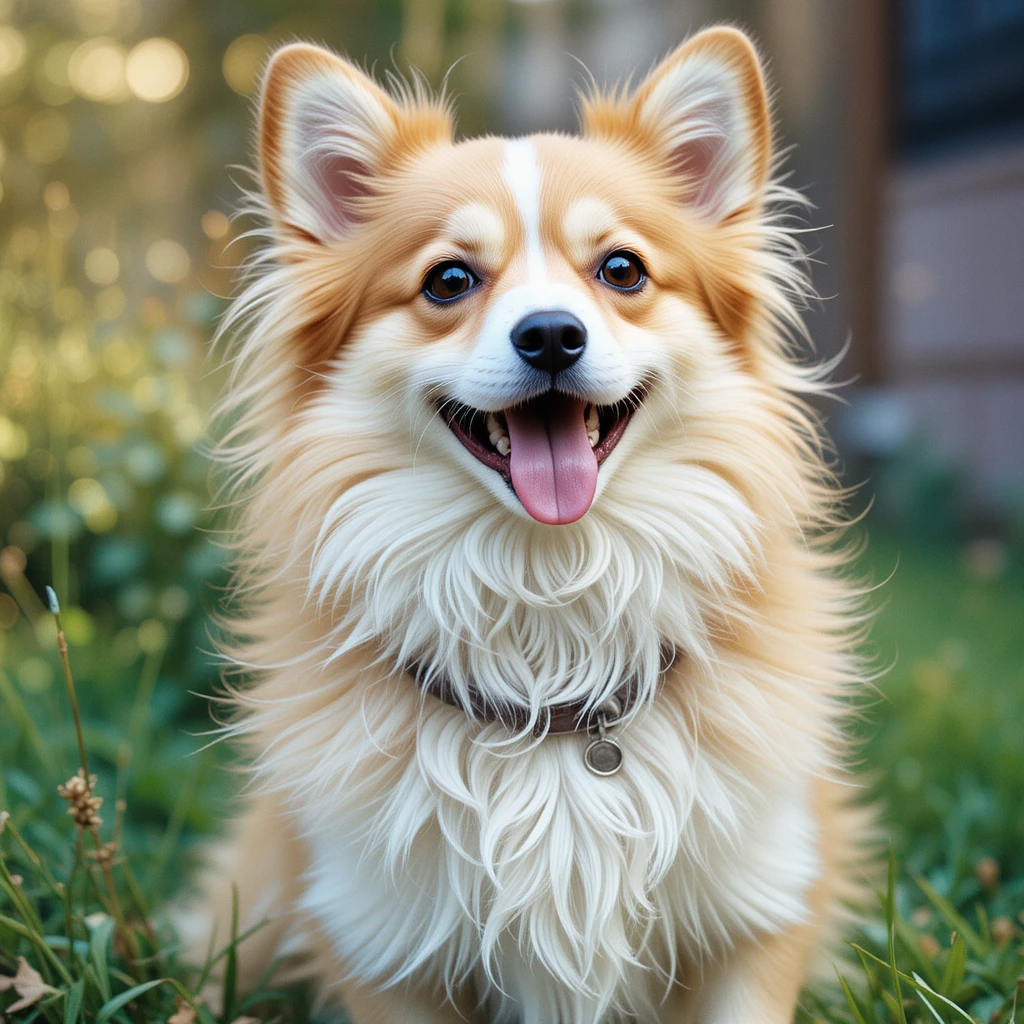
3 Reasons Why You Should Get a Pomeranian Corgi
The Corgi Pomeranian mix might be small in size, but don’t be fooled—they have big personalities and even bigger hearts. From my experience, these pups are incredibly loveable, and while they may not always enjoy a cuddle, they’ll be right at the door to greet you the moment you get home. Their affection is genuine and deep, just like their Pomeranian and Corgi parent breeds. With a charming, sweet personality, the mix may develop traits like separation anxiety if left alone for too long. These are companions for life, and they crave your attention and time more than most.
What’s more, they’re impressively smart, eager to be trained, and love showing off tricks. I’ve used short and fun training sessions with mine, especially helpful when dealing with the shorter attention span they sometimes inherit. They’re quick learners and thrive when activities are made playful. On top of that, both breeds naturally bark a lot—so expect a highly alert little dog. With the right structure, that energy turns into sharp watchdog instincts. Their frequent, powerful barking gives them excellent alertness, but they do need to be adequately managed or it can get a bit out of hand.
Corgi Pomeranian Mix and Families
The Corgi Pomeranian mix is without a doubt one of the most friendly, caring, and loving family companions you could ask for. With their small size, beautiful coat, and eager need for attention from their owners, they win over every family member quickly. From my experience, they truly love to be around people and offer nothing short of unconditional affection. However, their size can be a disadvantage—they are extremely fragile and can easily get hurt if someone accidentally steps on them, or if they jump from your arms or a table.
I’ve seen how one playful moment can turn risky, especially around children under 8 years old, so supervision is always a must. While they’re certainly excellent with kids, they’re not exactly the most kids-friendly breed for households with very young ones. Because Pomeranians and Corgis are naturally good with children, it’s often assumed that their hybrid will behave the same. But kids who play rough might tire, provoke, or even cause them to react with aggressive behaviors—not out of anger, but fear or discomfort.
As much as this toy dog wants to be part of the fun, it’s simply not built for roughhousing. These pups don’t cope well with solitude either. They crave being near their family, and the bond they form is deep. If you give them the love they need, they’ll absolutely shower you with loyalty and warmth in return.
Living With a Vocal Companion
One thing I’ve noticed over the years is that both parent breeds, the Corgi and the Pomeranian, really do love to bark—a lot. When you get a mixed breed like the Corgi Pomeranian, you’re essentially doubling down on that trait. They’ll respond to every little sound: the doorbell, distant fireworks, or even the quiet drop of a hat. If you’re the kind of person who needs peace and quiet at home, this might be hard to live with. I’ve had dogs that were loud before, but this mix? Next level. You don’t just “own” them—you live around their rhythm.
If barking drives you nuts, owning this dog will require extra patience and effort. I always tell new dog parents: start training as early as possible. With consistent practice, they can learn to quit barking when given a command, but it takes time. Ignoring this behavior won’t help. They aren’t doing it to annoy you—it’s instinct. So if barking is a deal-breaker, be honest with yourself before bringing this breed home. Otherwise, you’ll end up with a high-energy companion that doesn’t know when to stop.
Handle with Care Around Kids
While the Corgi Pomeranian mix is known for being playful and sweet, it’s important to know that both Pomeranians and Corgis carry traits from their past as herding dogs and even sled dogs in the Pomerania province. That working-dog nature doesn’t just disappear in a puppy. In fact, if your pup picks up this characteristic, you’ll notice a strong tendency to pull heavily on things—especially if left unchecked during early training. Speaking from my own experience raising one, without the right guidance, even the cutest pup can become a handful.
If you have babies or young children at home, you really have to stay alert. These mixed-breeds are pretty fragile, and rough playing can easily lead to accidents. I’ve seen cases where excited children unintentionally caused harm just by being a little too wild. That’s why I always recommend direct supervision. Don’t assume the dog will know how to behave—training is your job. Set boundaries early, watch closely, and never leave your pup alone with kids until you’re confident they both understand how to treat each other.
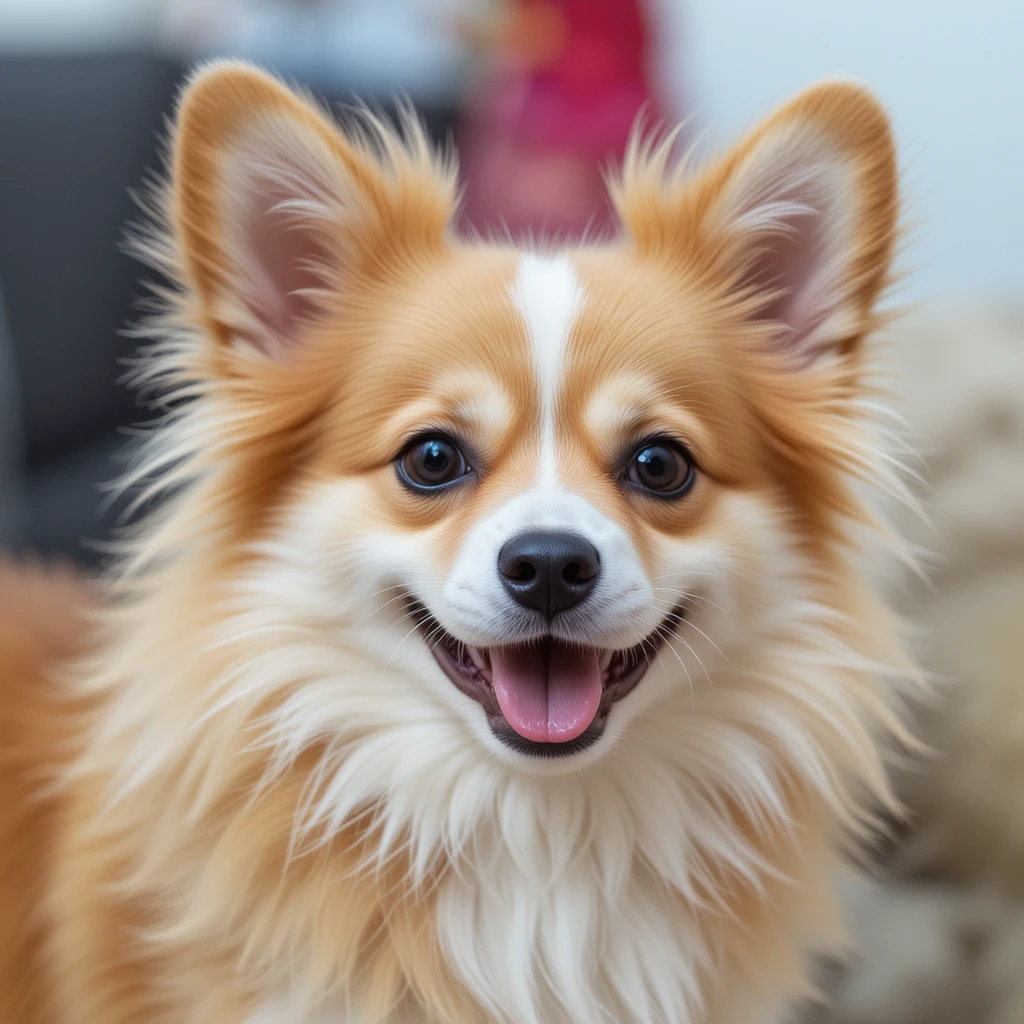
Other Corgi & Pomeranian Mixes
Choosing a breed that fits your lifestyle is one of the most important things you can do before bringing a dog home. Every year, I see tens of thousands of dogs placed up for adoption simply because the owner didn’t do enough research. While the Pomeranian Corgi is undeniably adorable, it might not be the perfect fit for everyone. If it doesn’t align with your daily routine or living space, you can always consider adopting one of over 50+ popular mix breeds that carry similar charm but may suit your needs better.
Some of my personal favorites outside the Pomeranian mix include the Husky Corgi, Corgi Bernese Mountain Dog, and the playful Beagle Corgi Mix—all incredibly cute with unique personalities. Don’t skip your homework though—always check each breed carefully. There are so many fun options like Australian Shepherd, Pitbull, Border Collie, Chiuhuahua, Poodle, Pug, Dachshund, Rottweiler, German Shepherd, Terrier, Great Dane, Labrador, and Shiba Inu Corgi Mixes. Each of these mixes brings something special, and the right one can become the best companion for your life.

